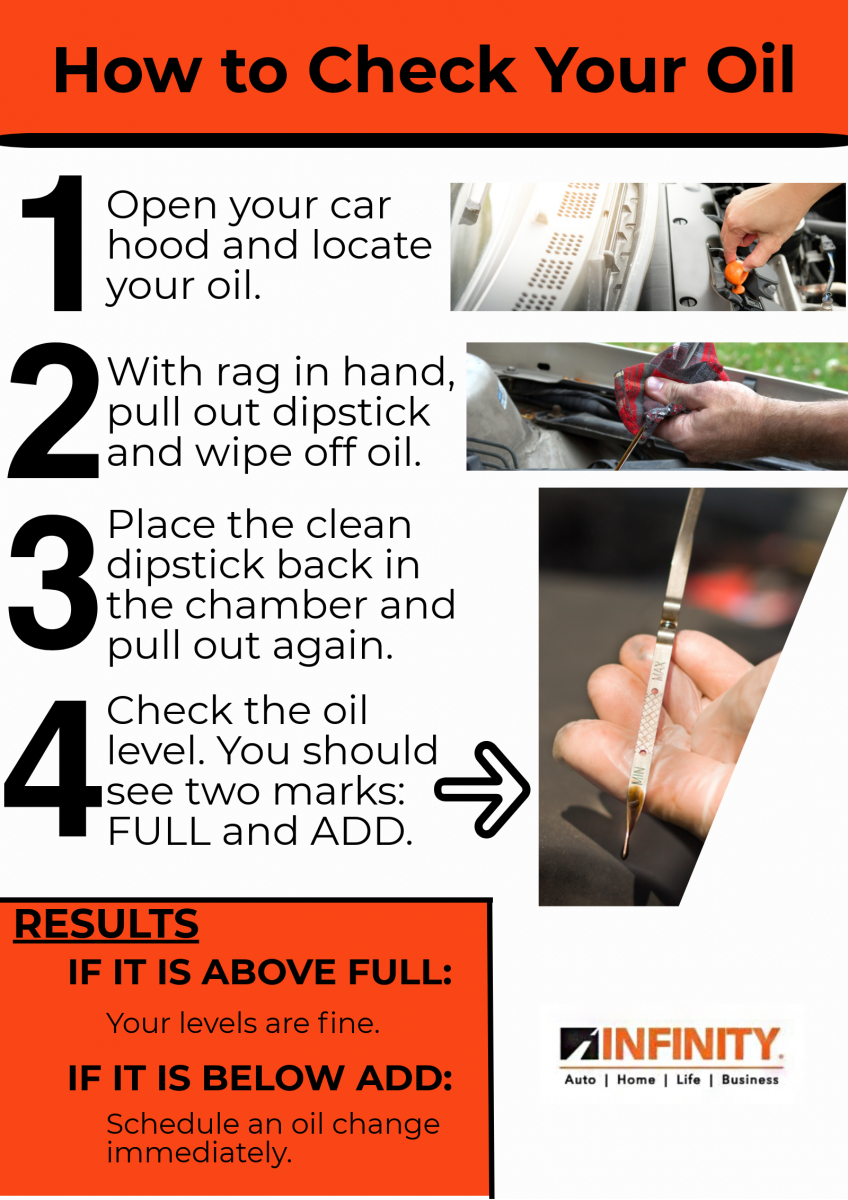How to Check If Oil Change was Done
To check if an oil change was done, review service records or check oil change sticker on the windshield. Verifying this ensures proper maintenance has been completed.
Regular oil changes are crucial for optimal vehicle performance and longevity. Neglecting oil changes can lead to engine damage and costly repairs. It’s essential to stay diligent in monitoring and confirming oil change services to keep your vehicle running smoothly.
By following simple steps, you can have peace of mind knowing your vehicle is well-maintained and operating efficiently. This proactive approach to oil change verification helps you stay on top of your vehicle’s maintenance schedule and ensures its reliability on the road.

Credit: www.infinityauto.com
Why Checking If Oil Change Was Done Is Important
The regular replacement of engine oil is essential for maintaining the health and functionality of your vehicle. Ensuring that an oil change has been performed is crucial for avoiding potential engine damage and ensuring proper vehicle performance.
Avoid Engine Damage
- Regular oil changes help to prevent the build-up of sludge and debris in the engine, reducing the risk of premature wear and tear.
- Fresh oil lubricates the engine’s moving parts, preventing friction and reducing the likelihood of costly repairs.
Ensure Proper Vehicle Performance
- Regular oil changes contribute to better fuel efficiency, enhancing overall vehicle performance and responsiveness.
- Monitoring oil changes also allows for the early detection of potential issues, ensuring that your vehicle operates smoothly and reliably.

Credit: www.toyotaoforlando.com
Inspecting The Oil Dipstick
To check if an oil change was done, inspect the oil dipstick. Look for clean, amber-colored oil that reaches the appropriate level on the dipstick, indicating a recent oil change.
Locating The Oil Dipstick
To find the oil dipstick, pop your vehicle’s hood.
Look for a brightly colored ring or handle labeled ‘Engine Oil’ or ‘Oil.’
The dipstick is usually located near the engine and may have a distinctive shape.
Checking The Oil Level And Quality
Pull the dipstick out and wipe it clean with a paper towel.
- Re-insert the dipstick all the way in.
- Take it out again to inspect the oil level.
| Oil Level | What it Indicates |
|---|---|
| Below Minimum Mark | Oil needs to be topped off. |
| Between Minimum and Maximum Marks | Level is ideal. |
| Above Maximum Mark | Excess oil level. |
- Check the oil quality by observing its color and consistency.
- Fresh oil is amber-colored and translucent.
- Dark or gritty oil may indicate the need for an oil change.
Examining The Oil Filter
Begin by identifying the oil filter’s placement under the vehicle.
- Look near the engine or underneath the car.
- Refer to the owner’s manual for exact location.
Checking For Presence And Condition
Confirm that the oil filter is present and in good condition.
- Inspect for any leaks or damage to the filter.
- Make sure the filter is securely in place.
Reviewing Maintenance Records
Reviewing maintenance records is crucial in determining whether an oil change was indeed performed on your vehicle. By scrutinizing service history and verifying oil change entries, you can ensure that your car has received the necessary maintenance. This will help you to avoid potential engine damage and premature wear and tear. Here are the steps to go through when checking service history and verifying oil change entries.
Checking Service History
Begin by obtaining your vehicle’s maintenance records from either the service center or the place where you have had your oil changed. Note the dates of each service and the type of work performed, especially focusing on oil changes. Observing a consistent pattern of oil change intervals is essential in ensuring that proper maintenance has been carried out.
Verifying Oil Change Entries
Double-check the maintenance records to confirm that the oil change has been duly noted. Look for entries that specify the type and quantity of oil used, the odometer reading at the time of service, and the date of the oil change. Ensure that these entries align with the manufacturer’s recommended oil change intervals, allowing you to ascertain if the oil change was performed in a timely manner.
Consulting A Professional Mechanic
Wondering if your last oil change was done correctly? Consulting a professional mechanic can provide you with peace of mind. They can check for clear signs of a recent oil change and ensure that the job was done correctly, protecting your engine’s longevity.
When it comes to checking if an oil change has been done properly, consulting a professional mechanic is a reliable option. These experts have the knowledge and experience to assess if the oil change was performed correctly or if any issues are present.
Seeking Expert Advice
If you have doubts about whether your oil change was done correctly, seeking expert advice from a professional mechanic is vital. These experienced professionals can inspect your vehicle and provide you with the necessary guidance.
Utilizing Professional Tools
A professional mechanic is equipped with specialized tools that can accurately determine if an oil change was done properly. These tools include:
- Oil Analysis Kits: Professional mechanics use oil analysis kits to test a small sample of the vehicle’s oil. They examine the oil for any signs of contamination or degradation, which can indicate if the oil change was performed correctly.
- Infrared Thermometers: By using an infrared thermometer, mechanics can measure the temperature of the oil. If the temperature differs from the recommended range, it could be a sign of an incorrect oil change.
- Dipstick Calibration Tools: These tools are used to measure the oil level accurately. Mechanics can verify if the correct amount of oil was added during the oil change.
By utilizing these professional tools, a mechanic can effectively evaluate the quality of an oil change and determine if any corrective measures should be taken.

Credit: m.youtube.com
Frequently Asked Questions For How To Check If Oil Change Was Done
How Do You Know If The Oil Has Been Changed?
Check the oil change sticker on the windshield for the date and mileage. Also, inspect the oil color and level on the dipstick.
How Do You Check Oil After Oil Change?
To check oil after an oil change, park on level ground, wait a few minutes, then pull out the dipstick, wipe it clean, reinsert, and pull out again to check oil level.
How Do I Check For An Oil Change?
To check for an oil change, refer to your vehicle’s manual for recommended intervals. Look at the odometer or use an oil change reminder sticker. Monitor oil color and level; if it’s dark or low, it’s time for a change.
Be proactive to maintain engine health.
How Do You Tell If A Car Has Had Regular Oil Changes?
Regular oil changes can be determined by checking the car’s maintenance records, inspecting the condition of the oil and filter, and noting the mileage at which the changes were done. Look for consistent intervals between changes, clean oil, and a properly-functioning oil filter.
How Often Should You Get An Oil Change?
It is generally recommended to get an oil change every 3,000 to 5,000 miles or every 3 to 6 months, depending on your vehicle and driving conditions.
What Are The Signs Of Needing An Oil Change?
Look out for signs like dark, dirty oil, low oil level on the dipstick, engine running louder than usual, or the oil change light coming on.
Can I Check My Oil Level Without An Oil Change?
Yes, you can check your oil level without an oil change by locating the dipstick under the hood, pulling it out, wiping it clean and reinserting it to get an accurate reading.
Conclusion
Checking if your oil change was done is essential for your vehicle’s health. By following the steps outlined in this post, you can ensure that the oil change was completed correctly. Regular oil changes are vital to maintaining the longevity and efficiency of your car.
Be proactive, and keep your engine running smoothly!

